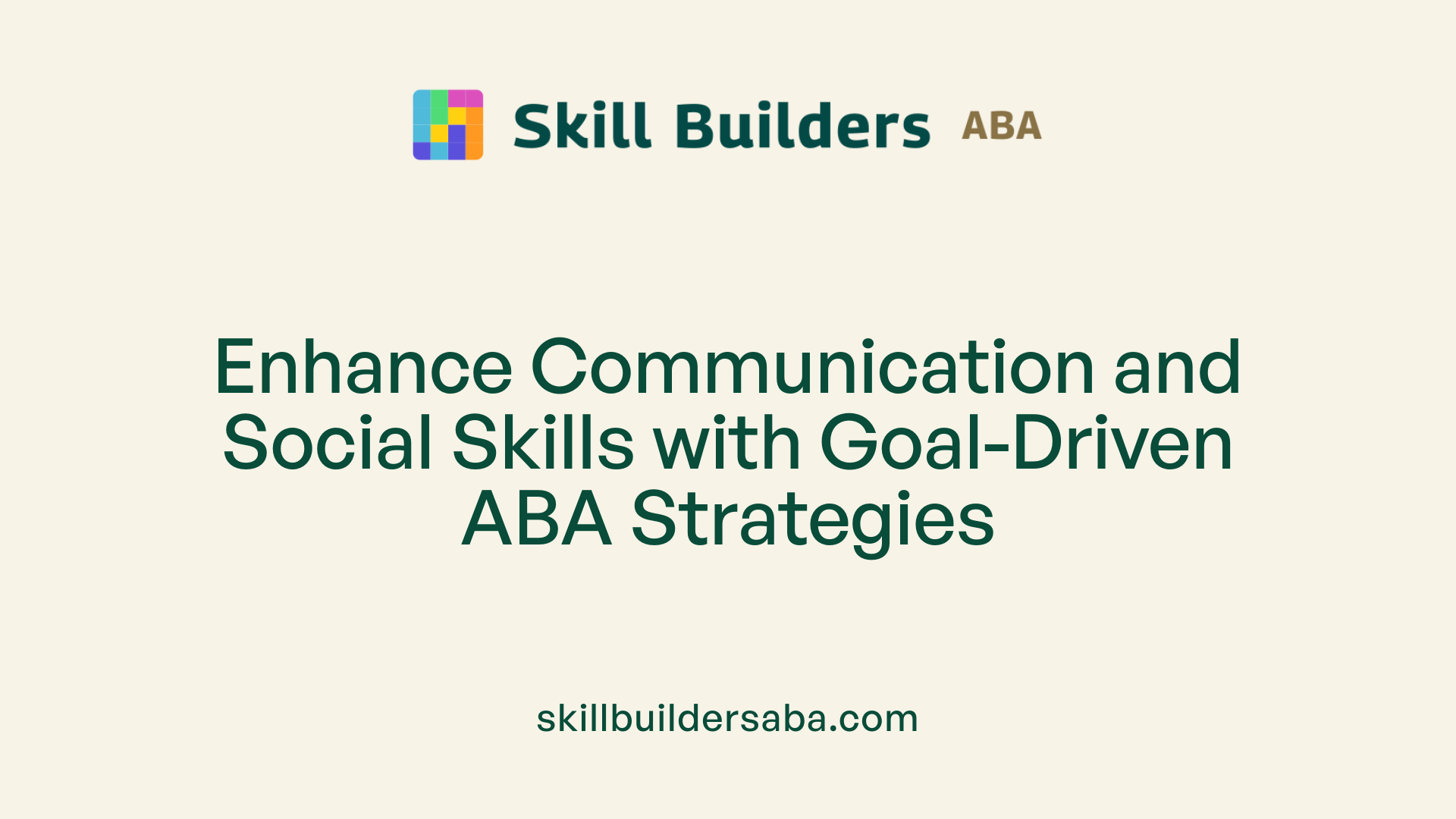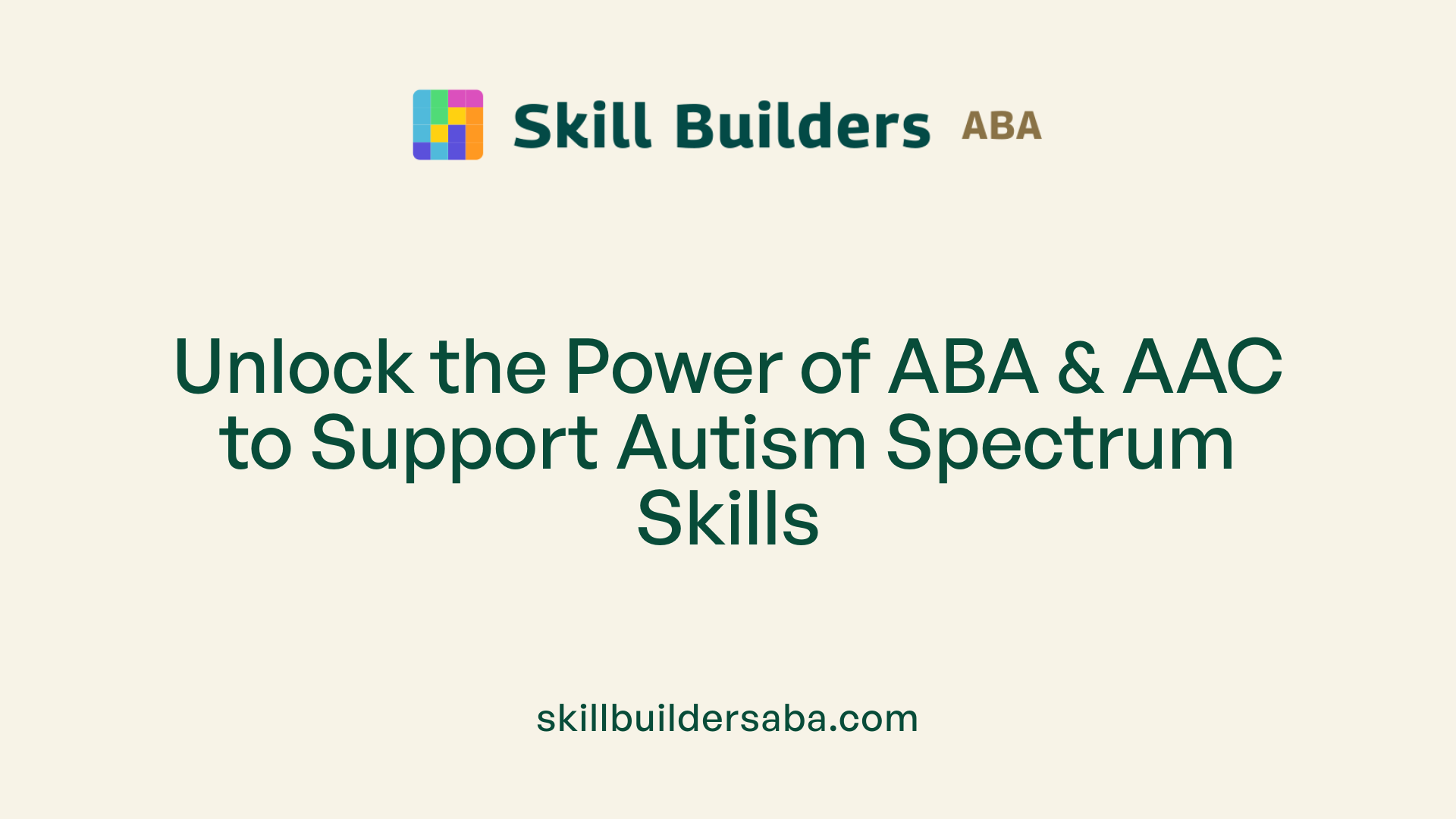
Supporting dual-language learners in ABA
Enhancing ABA Therapy for Dual-Language Learners with Autism
Understanding the Intersection of ABA and Dual-Language Learning
Applied Behavior Analysis (ABA) stands as a cornerstone intervention for individuals with autism, promoting skills in communication, social interaction, and independence. When supporting dual-language learners—children who acquire and navigate two languages simultaneously or sequentially—ABA requires tailored strategies to address unique linguistic and cultural needs. This article delves into the fundamentals of ABA therapy, explores professional qualifications, highlights effective techniques, and emphasizes culturally responsive practices essential for optimizing outcomes for dual-language learners with autism.
Foundations of Applied Behavior Analysis (ABA) Therapy for Autism
What is Applied Behavior Analysis (ABA) therapy and how is it used to support individuals with autism?
Applied Behavior Analysis (ABA) therapy is a scientifically based approach that uses the principles of behavior science to teach and reinforce socially significant adaptive behaviors in individuals with autism. ABA involves breaking down complex skills into smaller, manageable steps and employing reinforcement strategies, such as rewards, to encourage positive behaviors while reducing challenging ones like aggression or self-injury.
ABA interventions include a variety of evidence-based techniques such as discrete trial training, task analysis, prompting, time delay, and functional communication training. Therapists personalize programs according to the individual's strengths and needs, promoting skill development in areas like communication, social interactions, and daily living, ultimately aiming to improve independence and quality of life.
What is the historical background and scientific basis of ABA?
ABA is founded on behavior science principles developed by researchers such as B.F. Skinner and J.B. Watson. These principles focus on how behavior is learned and modified through environmental interactions. Over the decades, ABA has evolved from early discrete trial methods to incorporate more holistic, person-centered approaches emphasizing positive reinforcement and naturalistic teaching environments.
Comprehensive research, spanning over 40 years, has consistently demonstrated ABA's effectiveness in enhancing communication, cognitive, academic, and social skills among individuals with autism. Importantly, the field has moved toward ethical, respectful practices that support neurodiversity and family collaboration.
What is the goal of ABA in autism therapy?
The ultimate goal of ABA therapy is to enable individuals with autism to generalize functional skills across settings and live as independently as possible. This involves not only teaching new skills but also reducing behaviors that interfere with learning or social interaction.
ABA aims to empower individuals by enhancing communication, promoting self-help and daily living skills, while respecting their unique identities and needs. Early intervention typically involves play-based, naturalistic approaches with family participation to encourage skill generalization and maintenance over time.
The Role of Qualified Professionals in Delivering ABA Therapy

Who provides ABA therapy and what qualifications do these professionals typically have?
ABA therapy is delivered by a team of trained professionals with various levels of expertise and certification.
Board Certified Behavior Analysts (BCBAs) are the highest qualified professionals in ABA. They hold advanced degrees in behavior analysis or related fields, complete extensive supervised practice, and must pass a rigorous exam administered by the Behavior Analyst Certification Board (BACB). BCBAs are responsible for designing, overseeing, and modifying individualized treatment plans.
Registered Behavior Technicians (RBTs) are frontline providers who implement direct ABA interventions. RBTs require a high school diploma, specific ABA training, and certification through the BACB. They work under the close supervision of BCBAs to provide consistent, effective treatment.
Board Certified Assistant Behavior Analysts (BCaBAs) hold a bachelor’s degree and complete coursework in behavior analysis. They assist BCBAs by supervising RBTs and helping to implement intervention plans.
These ABA professionals work collaboratively, often as part of broader multidisciplinary teams that include speech-language pathologists, occupational therapists, and healthcare providers. Such collaboration ensures interventions are comprehensive, culturally responsive, and tailored to support individuals’ overall development and quality of life.
Culturally Responsive ABA: Addressing the Needs of Dual-Language Learners

How Does ABA Incorporate Diversity, Equity, Inclusion, and Belonging?
Applied Behavior Analysis (ABA) programs, such as the one offered at UMass Lowell, emphasize culturally responsive care by integrating diversity, equity, inclusion, and belonging (DEIB) principles into their training. This approach ensures that practitioners respect and support individuals from a variety of backgrounds, avoiding one-size-fits-all interventions. By fostering an environment that values cultural identity, ABA services can be more effective and meaningful.
What Are the Cultural and Linguistic Considerations in ABA?
Culturally responsive ABA recognizes the importance of understanding each learner's unique cultural and linguistic background. For dual-language learners, this means tailoring communication strategies and behavioral interventions to accommodate bilingualism or multilingualism. Such considerations include using appropriate language modes, involving family members who speak the learner’s native language, and adapting assessment tools to be linguistically and culturally valid.
Why Is Individualized, Responsive Care Important in ABA?
Individualization is central to ABA, particularly when working with diverse populations like dual-language learners. Responsive care means adjusting teaching methods based on ongoing data collection and feedback while honoring the learner's cultural norms and family values. This personalized approach enhances skill generalization and increases the likelihood of long-term success, supporting not only behavioral goals but also improving quality of life within the learner’s cultural context.
Common Goals of ABA Therapy with a Focus on Language Development

What Are the Common Goals of ABA Therapy for Individuals with Autism?
ABA therapy primarily focuses on enhancing communication skills and social interactions. It helps individuals with autism develop practical daily living skills and improve communication abilities, including language and functional communication techniques. This improvement often involves teaching children to request (mand), label (tact), respond (intraverbal), and imitate sounds or words (echoic).
Communication Skill Enhancement
Applied Behavior Analysis uses evidence-based communication interventions such as PECS (Picture Exchange Communication System), speech-generating devices, and sign language to build effective communication. These approaches are carefully selected based on individual needs and are often used alongside speech-language pathologists to support meaningful language development.
Social Interaction Improvements
ABA aims to foster positive social behaviors and increase peer engagement. Structured and naturalistic teaching methods help learners develop adaptive social skills that generalize to different settings, encouraging stronger social bonds and reducing isolation.
Reduction of Challenging Behaviors
Another important goal is to reduce problematic behaviors like aggression, self-injury, and destruction. ABA interventions employ differential reinforcement and extinction procedures to replace challenging behaviors with socially acceptable alternatives. This promotes safety and enhances the individual's ability to function in daily life.
Advancing Independence
ABA therapy supports the development of independent living skills. Goals are tailored to help individuals manage daily routines, self-help activities, and decision-making, enabling greater autonomy and quality of life.
ABA therapy is individualized, data-driven, and involves close collaboration with families and multidisciplinary teams to ensure that all goals align with the learner's strengths, preferences, and family priorities. Early intervention and active parental participation are vital in promoting skill generalization and long-term success.
Techniques and Strategies in ABA Therapy Supporting Communication
What are some common techniques used in ABA therapy?
ABA therapy employs various techniques tailored to individuals' unique communication needs. Positive reinforcement is central, where rewarding desired behaviors encourages their repetition. For example, a child may receive praise or a preferred toy after successfully using a communication method.
Prompting and fading are also key strategies. Initially, therapists provide prompts to guide the learner, which are gradually reduced to foster independence in communication skills.
Visual supports play an essential role. Picture schedules, videos, and charts help individuals comprehend expectations and new skills more clearly. These visual aids can simplify complex information and improve engagement.
Behavior chaining and task analysis break down complex behaviors into manageable steps. Behavior chaining teaches skills sequentially, linking each step to form the complete behavior. Task analysis further helps by dissecting behaviors into smaller components for targeted instruction.
Discrete Trial Training (DTT) is a structured method where skills are taught in small, repeated trials, promoting step-by-step learning of communication and social behaviors.
Naturalistic and play-based methods integrate teaching into everyday activities and play, making learning more enjoyable and generalized across settings. This approach emphasizes communication in real-life contexts and promotes spontaneous language use.
These techniques are often combined, with therapists collecting data to track progress and modify interventions as needed to maximize effectiveness and support functional communication development.
Applied Behavior Analysis and Augmentative and Alternative Communication (AAC)

Use of AAC methods in ABA
Applied Behavior Analysis (ABA) employs a range of augmentative and alternative communication (AAC) methods to support children with autism in developing functional communication skills. These AAC interventions are customized to the individual’s unique learning and behavioral challenges, often involving collaboration with speech-language pathologists to optimize outcomes.
Types of AAC: PECS, SGDs, sign language, communication boards
Several types of AAC are commonly integrated within ABA programs:
Picture Exchange Communication System (PECS): PECS uses pictures and symbols to teach functional communication, particularly requesting (manding). It fosters communication without requiring verbal prompts, making it ideal for nonverbal learners.
Speech-Generating Devices (SGDs): These portable electronic devices produce voice output that facilitates social interaction and peer acceptance. While effective, SGDs can involve additional training and resources.
Sign Language: A topography-based, efficient means of communication that is comprehensive but not universally understood. It demands significant time for acquisition.
Communication Boards: These range from simple low-tech boards with symbols or words to high-tech versions with dynamic displays. They support bonding and communication but high-tech options might limit access due to cost.
Collaboration with speech-language pathologists
Effective AAC implementation in ABA therapy hinges on multidisciplinary collaboration. Behavior analysts work closely with speech-language pathologists to select, tailor, and monitor AAC systems, ensuring they meet the child’s communication needs and complement therapy goals. This cooperative approach maximizes skill acquisition and generalization, empowering autistic individuals to communicate more effectively in various settings.
Assessment and Individualization in ABA Therapy for Dual-Language Learners
Comprehensive Evaluation Methods
Effective ABA therapy begins with a thorough assessment process that utilizes multiple approaches. These include reviewing medical and educational records, conducting interviews with the individual and caregivers, and performing direct behavioral observations. Standardized instruments such as the Autism Diagnostic Interview-Revised (ADI-R), Autism Diagnostic Observation Schedule (ADOS), Mullen Scales of Early Learning (MSEL), Vineland Adaptive Behavior Scales (VABS), and Childhood Autism Rating Scale (CARS) provide objective data to inform treatment planning.
Functional Behavior Assessment
A crucial part of the evaluation is the Functional Behavior Assessment (FBA), which identifies environmental factors influencing a learner’s behaviors. This process allows behavior analysts to understand the function behind both adaptive and challenging behaviors, enabling the development of targeted interventions tailored to the individual’s specific needs.
Setting Personalized Goals
Following assessment, individualized goals are crafted to promote meaningful progress. Goals focus on enhancing communication, social skills, self-help, and daily living abilities while considering the person's strengths and challenges. Treatment plans are data-driven and adjusted continuously based on ongoing progress monitoring to optimize outcomes.
Integrating Cultural and Linguistic Factors
For dual-language learners, ABA therapy incorporates cultural responsiveness by respecting linguistic diversity and family preferences. This includes adapting communication interventions to support bilingual development and collaborating closely with families to honor cultural values. Such integration ensures goals are relevant and achievable within the learner’s natural environment.
How is the effectiveness of ABA therapy measured?
The effectiveness of ABA therapy is measured through systematic data collection and analysis over time. Progress is tracked via standardized tools and assessments that evaluate improvements in communication, social interaction, adaptive behavior, and reduction of challenging behaviors. Behavioral data trends help clinicians make informed decisions, adapt interventions, and ensure therapeutic strategies are individualized and effective.
| Assessment Component | Description | Importance for Dual-Language Learners |
|---|---|---|
| Standardized Instruments | ADI-R, ADOS, MSEL, VABS, CARS | Provides objective baseline and progress data |
| Functional Behavior Assessment | Identifies function of behaviors | Essential for culturally appropriate behavior interventions |
| Personalized Goal Setting | Crafting individualized and meaningful objectives | Ensures goals align with bilingual and cultural contexts |
| Cultural/Linguistic Integration | Adapt therapy to family language and culture | Promotes generalization and family engagement |
Collaboration Among ABA Providers and Other Professionals
How do ABA providers collaborate with speech-language pathologists and occupational therapists?
Applied Behavior Analysis (ABA) practitioners routinely work alongside speech-language pathologists (SLPs) and occupational therapists (OTs) to deliver comprehensive care for individuals with autism. Collaboration ensures that interventions are aligned and complementary, addressing communication, sensory, and behavioral needs holistically. For example, when implementing augmentative and alternative communication (AAC) systems like Picture Exchange Communication Systems (PECS) or speech-generating devices (SGDs), behavior analysts coordinate with SLPs to tailor communication goals and monitor progress.
Why is cohesive multidisciplinary care important in ABA services?
Cohesive teamwork among professionals promotes consistent strategies across environments, preventing conflicting approaches that may confuse the learner. ABA providers, SLPs, OTs, and others share assessment data and participate in joint goal-setting, ensuring individualized and evidence-based treatment plans. This synchronized effort enhances skill generalization and accelerates positive outcomes while respecting clients’ unique profiles.
How does family involvement and caregiver training support ABA outcomes?
Families play a central role in successful ABA interventions. Behavior analysts provide systematic training to caregivers, empowering them to implement strategies consistently in natural settings. This involvement supports skill maintenance and generalization beyond clinical sessions and helps families feel included and competent in their child's development. Tailoring training to accommodate diverse family dynamics and cultural backgrounds further strengthens collaboration and treatment effectiveness.
Through multidisciplinary cooperation and active family engagement, ABA services become more dynamic, respectful, and effective in meeting the complex needs of individuals with autism.
Ethical Standards and Best Practices in ABA for Autism
Modern Ethical Guidelines in ABA
Applied Behavior Analysis (ABA) for autism is governed by strong ethical standards that prioritize respect, dignity, and empowerment of individuals. Key authorities, including the Autism Society of America, emphasize the importance of providing humane, supportive, and evidence-based treatment approaches.
Avoidance of Aversive Procedures
Contemporary ABA firmly rejects aversive techniques such as contingent electric skin shock. Such methods are condemned for their harmful and stigmatizing effects. Ethical ABA practices rely on positive reinforcement and scientifically supported interventions that promote safety and well-being.
Focus on Empowering, Not Normalizing
The primary goal of ABA is to enable autistic individuals to develop functional skills and improve quality of life, rather than enforcing conformity to neurotypical standards. Therapies are designed to support independence, communication, and social engagement while honoring neurodiversity and individual differences.
Standards for Quality ABA Providers
High-quality ABA providers demonstrate:
- Individualized goal-setting tailored to each person's needs and strengths
- Frequent, open communication with individuals and families
- Collaboration within multidisciplinary teams including speech and occupational therapists
- Delivery of services in natural settings to encourage real-life skill generalization
- Ongoing supervision and ethical adherence to safeguard wellbeing and effectiveness
Conversely, red flags include non-individualized, normalization-focused goals and lack of collaboration or relationship-building. Ethical best practices are grounded in comprehensive assessment, data-driven treatment adjustments, and culturally responsive care.
Early Intervention and Naturalistic ABA Approaches for Dual-Language Learners
What Are the Benefits of Early, Play-Based Intervention?
Early intervention using ABA that is play-based and naturalistic is highly beneficial for young children with autism, including dual-language learners. This approach leverages natural learning opportunities and play to engage children meaningfully. Play-based ABA fosters motivation and attention, making it easier for children to acquire communication, social, and adaptive skills without feeling pressured or stressed. It supports the development of functional and flexible skills that can transfer across everyday contexts.
Why Is Family Participation Important?
Family involvement is crucial in early ABA interventions, especially for dual-language learners. Caregivers learn strategies to support skill development during daily routines and social interactions, promoting consistency and reinforcement beyond therapy sessions. Active family participation also enhances the cultural responsiveness of interventions by honoring the family's language and traditions, making therapy more relevant and effective.
How Does Generalization of Skills Occur Across Settings?
ABA prioritizes the generalization of learned skills to natural environments such as home, school, and community settings. Therapy delivered in naturalistic contexts encourages children to apply skills broadly, ensuring meaningful and functional use. For dual-language learners, this means that acquired communication and social behaviors can be adapted to multiple languages and social situations, supporting overall independence and social integration.
Educational Preparation for ABA Professionals with Focus on Autism and Diversity
Graduate programs and certification pathways
UMass Lowell offers a Master of Science in Applied Behavior Analysis and Autism Studies designed to prepare students for both professional practice and research roles. The curriculum adopts a scientist-practitioner model, covering foundational topics like behavior concepts, philosophical underpinnings, experimental analysis, ethics, behavioral assessment, and intervention procedures. Importantly, students complete supervised fieldwork at affiliated agencies, gaining hands-on experience working with clients across the lifespan.
The program includes two specialization options: Applied Behavior Analysis (ABA) and Autism Studies, catering to varied career paths such as autism research or behavioral analysis. Graduates are equipped to sit for the BCBA® exam and seek licensure (LABA) in Massachusetts. Employment opportunities often include organizations such as Boston Behavior Learning Centers and Beacon ABA Services.
Emphasis on diversity, equity, inclusion, and belonging (DEIB)
A distinctive feature of the program is its strong commitment to culturally responsive care and the principles of diversity, equity, inclusion, and belonging (DEIB). Training emphasizes the importance of understanding and respecting diverse backgrounds, ensuring that future ABA professionals are prepared to serve a multicultural population effectively and ethically.
Preparation to support diverse populations
Students gain competencies to support diverse individuals by integrating DEIB principles into all aspects of ABA practice. This includes individualized assessment and goal-setting, collaboration with multidisciplinary teams, and culturally informed intervention strategies. The program’s approach stresses family involvement and tailoring interventions to align with unique cultural and linguistic needs. This comprehensive preparation helps graduates deliver respectful and effective ABA services that honor neurodiversity and promote equity in therapeutic outcomes.
Job Outlook and Career Opportunities in ABA for Dual-Language Learners
Projected Demand and Salary Data
The field of Applied Behavior Analysis (ABA) is experiencing notable growth, especially in Massachusetts where job growth for master's degree holders in ABA is projected at +13.3%. Board-Certified Behavior Analysts (BCBAs) can expect an average salary around $75,000, reflecting the demand for skilled professionals who can provide culturally responsive services to diverse populations, including dual-language learners.
Employment in Agencies Serving Developmental Disabilities
Graduates with expertise in ABA often find employment with agencies specializing in developmental disabilities. Organizations such as Boston Behavior Learning Centers, ABI New England, and Beacon ABA Services frequently hire ABA professionals to design and implement interventions. These agencies commonly support clients of all ages and emphasize individualized care tailored to the unique linguistic and cultural backgrounds of dual-language learners.
Impact of STEM-Designated Programs
STEM-designated graduate programs in ABA, like the one offered at UMass Lowell, provide students with advanced training and research opportunities that enhance their professional readiness. The scientist-practitioner model equips graduates to address the complexities of autism intervention, including strategies for working with bilingual and multilingual populations. This specialization boosts employability and capacity to deliver evidence-based, ethical, and effective ABA services that honor cultural diversity and promote equitable outcomes.
Delivering ABA Services in Natural Settings to Support Dual-Language Learners
Why is the context and environment important in ABA service delivery?
Delivering ABA services in natural settings is crucial because it allows interventions to occur where learning naturally happens—at home, school, or community environments. This approach promotes comfort and familiarity, making it easier for individuals, especially dual-language learners, to engage with and absorb new skills. Natural environments also provide authentic opportunities for practicing and responding to real-life situations, which enhances learning effectiveness.
How does delivering ABA in natural settings help facilitate the generalization of skills?
Generalization—the ability to apply learned skills across different contexts and people—is a core goal of ABA. Teaching in natural settings helps by providing varied and meaningful experiences where skills are practiced immediately in functional situations. For example, a communication skill learned during ABA sessions can be used during family meals or playdates, reinforcing its relevance and increasing the likelihood that the skill becomes a lasting ability.
How do ABA practitioners respect individual linguistic and cultural environments?
Respect for an individual's linguistic and cultural background is vital for effective ABA services, especially when working with dual-language learners. Practitioners tailor interventions that consider the child’s primary languages and cultural practices. They collaborate with families and use culturally relevant materials and communication methods. This culturally responsive care ensures skills taught are meaningful and applicable to the learner's everyday life.
Additionally, collaboration with bilingual professionals or interpreters can support accurate communication and better understanding. This respect for diversity fosters trust, promotes engagement, and enhances the overall effectiveness of ABA interventions for dual-language learners.
Advancing ABA for Dual-Language Learners: A Path Forward
Supporting dual-language learners with autism through ABA therapy requires not only adherence to evidence-based behavioral principles but also thoughtful incorporation of cultural and linguistic nuances. Qualified professionals implementing personalized and ethically sound interventions, collaborating closely with families and multidisciplinary teams, can foster meaningful communication and independent living skills. Embracing diversity and naturalistic approaches enhances generalization and quality of life for these children. As research and educational programs continue to evolve, the future of ABA for dual-language learners shines bright, promising tailored, effective support that respects and empowers every individual's unique journey.
References
- Effects of Applied Behavior Analysis on individuals with ...
- Statement on Use of Applied Behavior Analysis (ABA) for ...
- Master of Science in Applied Behavior Analysis and Autism ...
- 4 Methods for Increasing Communication Within Applied ...
- Making Informed Decisions:
- Exhibit A: ABA Therapy is Nationally Accepted
- Applied Behavior Analysis Practice Guidelines for the ...
- Applied Behavior Analysis (ABA)
- Understanding Your Child's ABA Therapy Providers
- ABA Techniques: Strategies for Behavior Analysts - GSEP Blog
Reach Out Today
Learn more about how we can support your child’s growth and development. Contact us to discuss our services and availability in your area.
.svg)